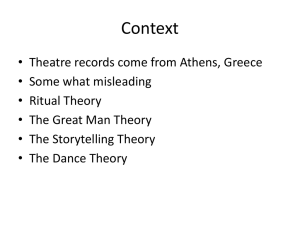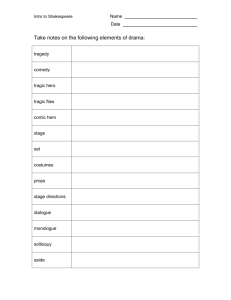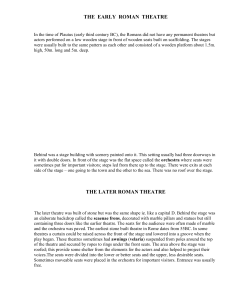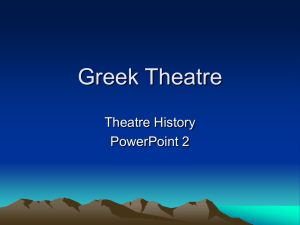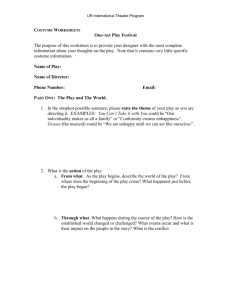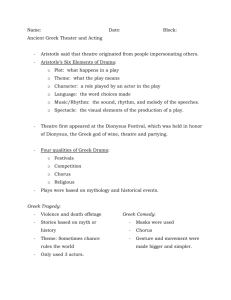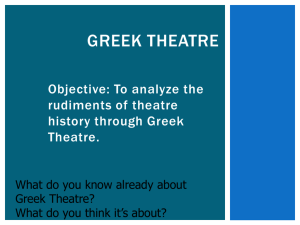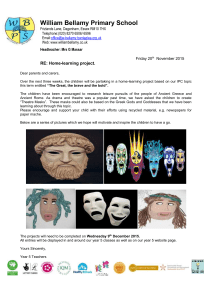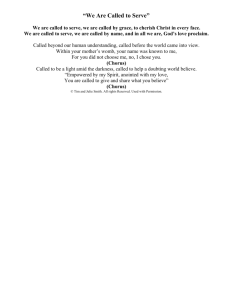Athens and the theatre
advertisement
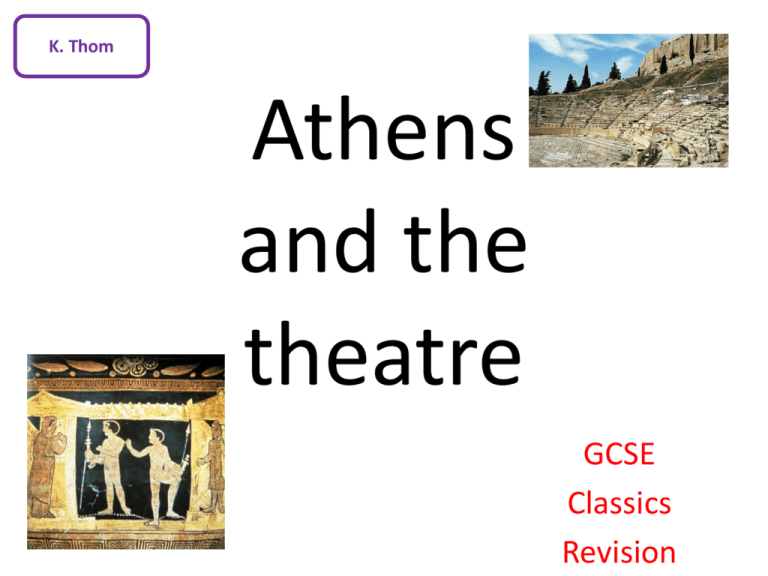
K. Thom Athens and the theatre GCSE Classics Revision The theatre • • • • The Athenians invented drama The main theatre was the Theatre of Dionysos This was built into the hillside of the Acropolis The theatre was part of the sanctuary of Dionysos – linking drama and religion The layout Two parodoi were entrances for the audience AND cast. The PROSKENE: a raised stage Actors would change in the skene + props were stored here. In front of the skene were double doors, usually used to represent a building entrance. The seating area; more than 15,000 seats. All with good views of the stage + excellent acoustics. Where the chorus sang and acted. This is also where the ALTAR was; sacrifices were made before every play, every morning. Details • Limited special effects during plays (so the acting had to be of a very high standard)... a) a mekhane; a hoist to make actors fly in the air (usually used for the role of a god) b) The ekkuklema; a trolley like device usually had a dead body on it to represent a murdered character c) Thunder; possibly rolling large stones under the theatron seats d) the main acts would climb on the skene or proskene (reserved for the role of gods [again]) e) The front of the skene was painted as a temple or palace Exam Question - 2012 a) Describe briefly the layout of a Greek theatre [5] b) Explain how the features of a Greek theatre helped the audience to enjoy a play. [5] c) Hoe exciting do you think it was to watch and listen to the Chorus in a Greek play?. [5] Did the theatre suit the needs of the people who used it? 1. 2. 3. 4. 5. 6. 7. 8. 9. The size (large) enables it to accommodate a large number of people Its shape offered superb acoustics + good visibility because of tiered seating There was easy access to seats + special VIP seating The orchestra offered an open, visible space for dancing + processions The elevated proskene separated actors from the chorus + enhanced visibility The skene provided a back drop, changing area, extra platform for acting, keeping props The ekkuklema allowed for the revealing of dead bodies The mekhane would be visually effective and allow for the introduction on god roles The scenery and sound effects would enhance the dramatic experience Problems with the layout... • Seating was not very comfortable for long periods of time • The theatre was open to the elements • Some of the audience were a long distance from the actors • The elevated proskene separated actors from the chorus • The scenery could not be changed Tragedies • • • • • • • • • • Very serious + grand Set in the heroic past Actors would play parts of gods, goddesses, kings and queens Roles of slaves and soldiers were also common in tragedies Asks life’s deepest questions: why do people suffer and how much do the gods look after people? Main character – a hero who has suffered a major catastrophe and has to cope bravely No happy endings Tragic costumes + masks = serious and thoughtful expressions Main item for costumes was a long robe [which were sometimes stiff and heavy] + clothes were colourful and decorated with patchwork patterns (often reflecting heroic or royal qualities) Actors wore soft leather foot wear Comedies • • • • • • • • • Set in the everyday, present Athens Riotous and hilarious (and rude!) Masks designed to look ridiculous and over sized Costumes = short tunic and tights were thickly padded Mocking the people of Athens especially politicians and well known figures e.g. Socrates Use of a large leather phallus was common, worn by male characters to simulate an erection! (Dionysus was god of fertility so the phallus was linked to worship) Actors rolled around in slap stick fashion Main roles included: a simple country farmer, a smooth talking city dweller, a grumpy old man and a clever slave Exam Question - 2011 a) What did Tragic actors wear? [5] b) Explain how their costumes and masks contributed to their performance on stage. [5] c) Imagine you are an ancient Athenian. Would you rather have watched a tragedy or a comedy? Explain your answer. [5] The three actors • Each play only had three main acts • The actors played a number of roles (up to 5 distinct characters) • They wore full head masks to show their different characters • The masks are usually made of linen, cork or wood and had hair on top The chorus • • • • • • • Made up of 15 members for a tragedy 24 members for a comedy All local men selected from Athens (amateurs) They sang + danced between scenes Sang and performed on the orchestra This gave main actors a chance to change costumes + masks The chorus was used to comment on the play, giving the audience back ground information or creating tension or mood e.g suspense • All wore uniform costumes that depicted their place in society e.g. An old man would wear dignified robes • In a comedy the chorus would often dress up as animals • E.g. Aristotle wrote a plays called Birds, Frogs and Wasps – for each play the chorus would dress in the relevant animal costume [great fun for the audience]
